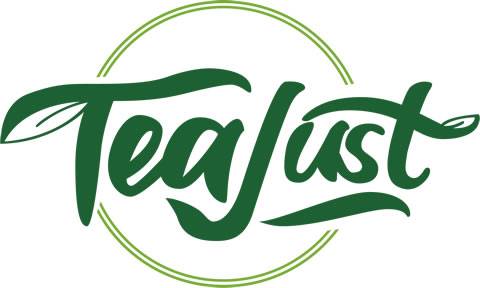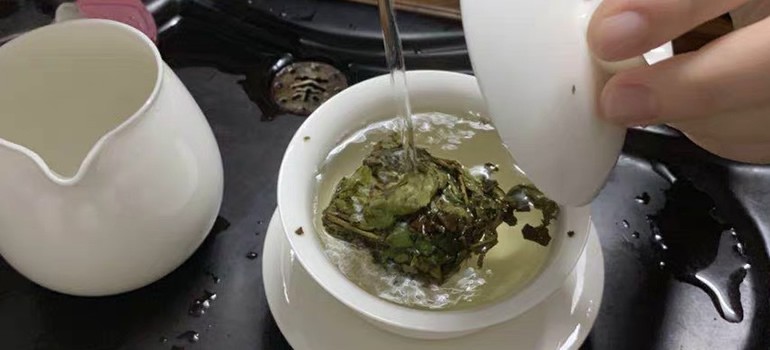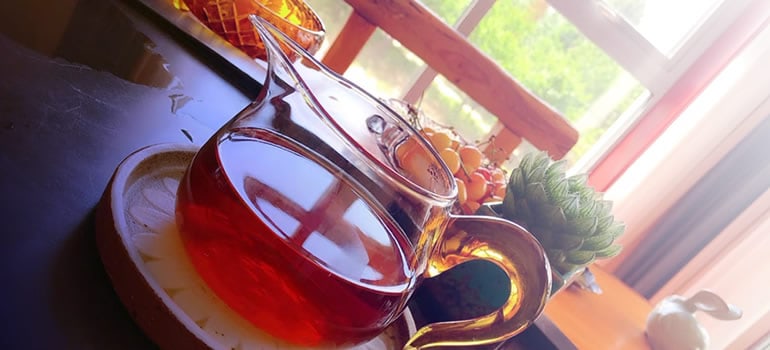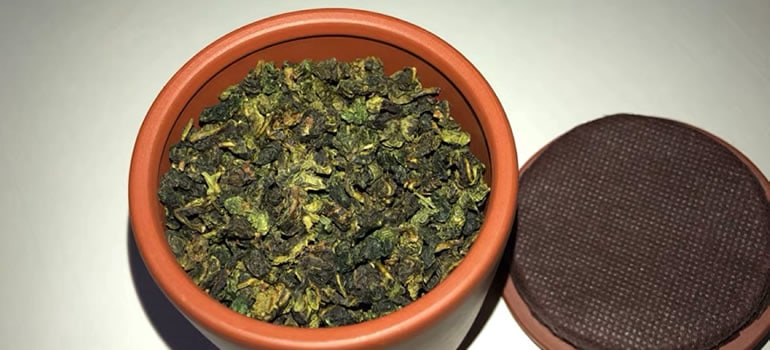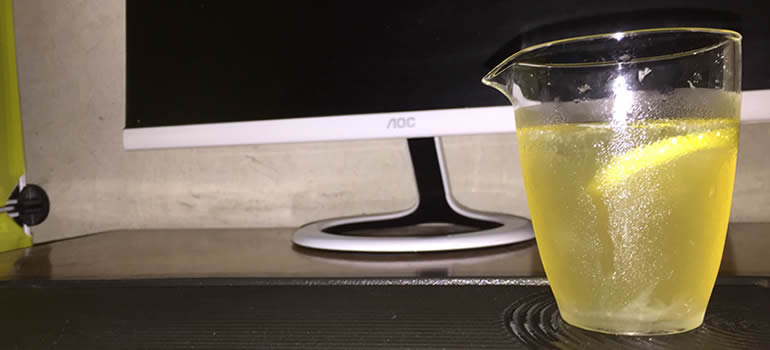While it has been done quite a lot throughout history, reading tea leaves has once again resurfaced into the mainstream. With more and more people getting interested to try it out, it is but proper to try and discuss it a whole lot further. This way, you do not only learn about the basics, but you also get discover new things about this art. And whether you believe it or not, it is a fun way of getting to predict things about our lives.
Technically known as tasseography, reading tea leaves refers to the divination or the fortune-telling practice that would interpret the patterns or shapes of tea leaves. It involves a series of steps that would include the following:
- preparing the ambiance, the tea set, and the tea leaves by placing a pinch of the tea leaves on a cup then pour the boiling water
- drinking the contents of the cup, leaving the tea leaves to clip to the sides and bottom of the cup.
- interpreting the symbols that the tea leaves would form, associating them to their position in the cup.
Whether you believe it or not, it is always interesting to try something out, especially that it goes along the wavelengths of tarot reading or crystal magic. So keep reading, and pay attention. The next information will help you know more about the essential things that you should know about reading tea leaves.
What does it mean by reading tea leaves?
Like any divination methods, reading tea leaves is based on the concept of energy direction. By focusing on the tea, it becomes energetic conduits that would be able to mirror one’s experiences. Moreover, these energetic conduits are also said to show the things that are yet to happen. So how does one get to do it? You can find these messages within the shape, color, placement, and even the density of these tea leaves.
It is worth noting that as of this moment, there is no scientific evidence to support the claims that you can determine the future by interpreting the patterns. However, many people claim that the results are something to note about, because they may provide themselves accurately in various instances. As a matter of fact, it can serve as a powerful meditative tool that provides insights into your subconscious.
In addition to this, the process of reading tea leaves can help stimulate your imagination, allowing you to create your own interpretations and solutions from what you see on the cup. So the art itself is a fun and creative way to listen to yourself.
What is the history behind reading tea leaves?
The term tasseography, as it is often called also as, is derived from the French word tasse, which means cup, and the Greek suffix –graph which means writing.
While it has its resurgence lately, tea leaf reading actually has had a long history under its helm. It is actually first attributed to the Chinese people who held deep adoration of tea and its benefits. Moreover, it was believed that it began after tea was first discovered by Emperor Shen Nun. It was the fortune-tellers who first noticed patterns that the tea leaves have left in their cups after drinking the tea. They soon started interpreting messages and prophecies from these tea leaves. They thought that they could predict the past, present, and future with this technique. And rightfully so, many manifestations proved accurate.
It was during the seventeenth century when tea leaf reading spread and developed in Europe, thanks to the Dutch merchants who introduced tea to the continent. Soon, its medieval European fortune-tellers – who first used splatters of lead, wax, and other molten substances – started adapting tasseography in their practices. It was an instant hit because it was cheap and easy to do. Moreover, others treated it as a method of entertainment.
Soon, other countries and kingdoms such as Wales, Ireland, England, and Scotland have produced a number of authors and practitioners of tasseography. Even potteries from England have crafted a lot of elaborate teacup sets that are design specifically to help in fortune-telling.
There were other cultures who adapted tasseography, but they used other materials instead of tea. In the Middle East, for instance, they practice divination using left-over coffee grounds from Lebanese coffee or Turkish coffee.
What are the basics of reading tea leaves?
Being a divination practice, reading tea leaves requires a ritual to take place. That is why the following steps should be treated with the utmost respect and sanctity.
Preparing to Read Tea Leaves
The first thing that you need to do is to set up the ambiance of your environment. Clear your reading area by removing any unnecessary objects that may distract your reading process. Place a cloth on the table where the process will take place.
You also need to find the tea set that includes a teacup with a handle and a saucer. The cup should be flat bottomed and wide, with no patterns. The tea set should be white so that you will be able to read properly.
After setting up your reading area and your tea set, the next thing that you are going to prepare is the tea. Take a pinch of the tea leaves and then put them in a cup. After which, you pour the boiling water into the cup. Cover it with the lid or the saucer. Allow the tea leaves to stand for about three minutes.
The Ritual
You need to drink the contents of the cup, leaving the tea leaves and a small amount of liquid. The person whose fortune is to be told, known to be the sitter, should take the cup by the handle in the left hand and move rapidly in a circular motion three times from left to right. Notice that some of the tea leaves will cling to the sides of the cup while the others will remain at the bottom. The next thing to do is to slowly invert the cup over the saucer and leave it until all of the remaining tea will drain away.
The sitter should calm their minds and contemplate the questions they want to ask, all while holding the cup. The handle of the cup would indicate the consultant in their spheres. The cup can be split into three different parts – the bottom, the side, and the rim. The rim would determine the present moment of the sitter, while the side represents the events that would happen in the near future. The bottom represents the events that would happen in the distant future.
Fortune Telling
The seer will then receive the cup from the sitter and then proceeds to tell their fortune. The seer needs to focus on the scattered tea leaves over the cup. Turn the cup over and look from various angles until the symbols will become clear. We suggest that you lengthen your patience in looking for their symbols as some may be confusing. The more you search, the clearer the symbols will become.
You have to take note of the objects that these symbols resemble. You will also need to try to figure out the relation of the objects from each other. Remember that symbols that indicate bad omens may be offset by the good ones. Good ones, on the other hand, will be strengthened or weakened by the other symbols.
It is also worth noting that a shape that forms from the dark colors of the tea leaves may mean bad omen. However, if a shape is seen in the white cup, it may mean something positive. You may also spot letters that would form from the tea leaves. It is thought that any capital letter would refer to a place while a lower case letter would mean someone’s name. So S may mean Sweden or it could be a sign that you will meet someone named Shawn.
Always remember to associate the symbols with their position in the cup. This way, you can easily describe to the sitter what their future holds.
What are the meaning behind the symbols?
There are various symbols that you can see when you read tea leaves. These symbols would surely mean something that could predict something about your future. We have divided the symbols to make things easier for you.
Animals
- Birds – They represent good luck. If the birds are flying, then you may receive good news from the direction where they came from. If the birds are at rest, then you are assured of a fortunate journey.
- Butterfly – It represents pleasure and success.
- Cow – It represents prosperity.
- Eagle – It represents riches and honor that you can achieve by changing housing.
- Elephant – It represents good luck, good health, and ultimate happiness.
- Fish – It represents good news from another country.
- Fox – It indicates that you are being backstabbed by a close friend.
- Goat – It represents the presence of enemies.
- Greyhound – It represents hard work that pays off with a good fortune.
- Owl – It indicates poverty or sickness. It serves as a warning against beginning a new
- venture.
- Pig – It indicates that you have a faithful lover but jealous friends.
- Rabbit – It predicts that you will have success in a city.
- Rat – It indicates losses through your employees or enemies.
- Reptiles – They represent arguments.
- Shark – It represents the danger of death.
- Sheep – It represents prosperity and success.
- Snakes – They indicate a bad omen, so you better take precautions.
- Swan – It indicates good luck and happy love life.
- Unicorn – It may represent a scandal.
- Worms – They indicate that you may have secret enemies.
Nature
- Acorn – It indicates continued and improved health.
- Apples – They represent success and long life.
- Clouds – It indicates serious troubles.
- Clover – It shows good luck, prosperity, and happiness.
- Crescent moon – It represents prosperity and fame.
- Heavenly bodies – They represent great happiness, good luck, and success.
- Mountain – It represents a powerful friend.
- Mushroom – It represents a sudden separation of lovers after a fight.
- Palm trees – It represents good omen and success in any undertaking.
- Pear – It represents wealth and financial stability.
- Pine tree – It represents contentment.
- Star – It indicates good luck.
- Trees – In general, trees indicate prosperity and happiness.
Shapes
- Arrows – They indicate bad messages from the direction where the arrow points.
- Circles – They symbolize money or present.
- Cross – It means trouble.
- Heart – It represents the presence of a lover.
- Lines – They can mean a journey.
- Triangles – They indicate unexpected good fortune.
Objects
- Aircraft – It indicates failed projects.
- Anchor – It represents success in business or in love.
- Ax – It symbolizes the possibility of overcoming issues.
- Boat – It represents a visit from a friend.
- Bouquet – It means good overall circumstances.
- Bridge – It indicates a positive journey.
- Car – It means approaching wealth.
- Coffin – It indicates the sickness or death of a loved one.
- Compass – It symbolizes business travel.
- Crown – It indicates success and honor.
- Hammer – It means you can overcome challenges.
- Hourglass – It means that there is imminent danger coming your way.
- Kettle – It represents death.
- Ring – It symbolizes marriage.
- Scissors – They represent arguments or breakups.
- Sword – It represents arguments, specifically between lovers.
- Wheel – It represents inheritance.
How are lines and letters important in tea leaf reading?
As mentioned earlier, letters do represent either a place or a name, depending on whether it is capital or lower case. If we recall, capital letters may symbolize a place while small letters may symbolize the name of a person. But there is more to that. The letters may also be connected to the symbol that is closed to it. For instance, the small letter L is near a ring. The ring represents marriage. The placement of the letter L close to the ring symbol will indicate that you will be married to a person whose name begins with the letter L.
Another example would be seeing the capital letter T near fishes, and you found these symbols at the bottom of the cup. Fishes indicate that you will receive good news from another country. It indicates that you will receive good news from a country that starts will letter “T” in the distant future.
It is worth noting that smaller tea leaves form lines inside the cup. As mentioned earlier, a line would indicate a journey. So a long line would mean a long journey, while a short line means a quick journey. If the line would reach the handle of the cup, then the sitter will probably be going back home.
If the line would end before it reaches the handle, then it means that the sitter will most likely relocate to another place. A broken line or a wave would indicate delayed journeys. Straight lines, on the other hand, would mean rapid trips.
There are also instances where numbers are present in your cup. When numbers are near a line, it may indicate the duration of your journey. For example, a number three near the line means that your journey will take three days.
How to choose the right tea for reading?
When reading tea leaves, we suggest that you use loose tea leaves. These types of leaves are ideal because they leave behind sediments that can form shapes and patterns. Loose leaves also tend to have a uniform size, which may contribute to better reading. You may use green tea, but it may not bring about the best results since they contain flower buds and petals that differ in sizes. This can bring about inaccurate reading.
Many of these loose leaves are readily available on the market or online. We don’t really recommend using tea bags because they will only inhibit you from having sediments. Cutting open these tea bags to use their content will not work as well. The reason is that the tea can be too fine so it may not bring about the best patterns and shapes.
What are the things to consider before reading?
The art of reading tea leaves is essential because it allows the readers to guide the reader while aligning themselves with power. Yet it requires a lot of practice before you can perfect this craft. After reading through the process of doing so, it is but proper that you start practicing reading. But before you do so, there are some things that you have to keep in mind so that you will perfect the craft much easier. Here are some tips that you can take before you start reading.
- Try to clear your mind of anything especially bad thoughts because they will only hinder you from having precise reads. Trust your intuitions and first impressions. Do not second guess yourself.
- Let the process come naturally. Calmly examine the shapes and the symbols that you can see. Do not rush. Take your time. Rushing the process will only result in having inaccurate reads.
- When looking at the tea leaves, you try to discern the shapes of how the leaves are clumped together. Be low in your deliberation of the shapes. If you do not look closely at the leaves, you may end up misinterpreting them.
- To help you improve your skill, always keep a diary of your readings. By doing so, you can keep track of how you interpret past tea leaves. This will help you gain depth in your readings.
Wrapping Up
Symbols and shapes may be more than what meets the eye. By reading these symbols in tea leaves, you may discover a deeper meaning behind what you already have with you. While reading tea leaves is purely superstitious, you may find some truths to it that you may apply in your daily life.
It is pretty accurate to say that reading tea leaves do require a set of knowledge, and we hope that this guide has helped you in trying out this art. In the end, it will really depend on your interpretation as to how you will use the information you gained from reading in your life. Enjoy reading tea leaves!
